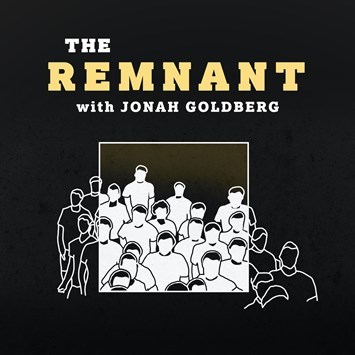Matt Ridley's Blog, page 10
May 10, 2020
Is the chilling truth that the decision to impose lockdown was based on crude mathematical guesswork?
My article with MP David Davis for The Telegraph:
Professor Neil Ferguson of Imperial College “stepped back” from the Sage group advising ministers when his lockdown-busting romantic trysts were exposed. Perhaps he should have been dropped for a more consequential misstep. Details of the model his team built to predict the epidemic are emerging and they are not pretty. In the respective words of four experienced modellers, the code is “deeply riddled” with bugs, “a fairly arbitrary Heath Robinson machine”, has “huge blocks of code – bad practice” and is “quite possibly the worst production code I have ever seen”.
When ministers make statements about coronavirus policy they invariably say that they are “following the science”. But cutting-edge science is messy and unclear, a contest of ideas arbitrated by facts, a process of conjecture and refutation. This is not new. Almost two centuries ago Thomas Huxley described the “great tragedy of science – the slaying of a beautiful hypothesis by an ugly fact.”
In this case, that phrase “the science” effectively means the Imperial College model, forecasting potentially hundreds of thousands of deaths, on the output of which the Government instituted the lockdown in March. Sage’s advice has a huge impact on the lives of millions. Yet the committee meets in private, publishes no minutes, and until it was put under pressure did not even release the names of its members. We were making decisions based on the output of a black box, and a locked one at that.
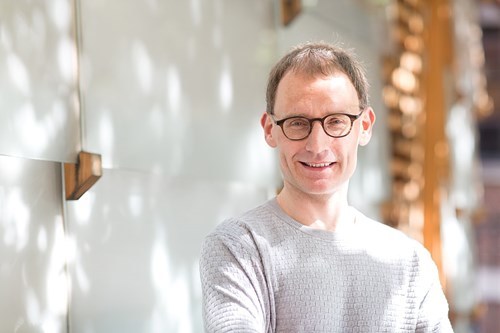
It has become commonplace among financial forecasters, the Treasury, climate scientists, and epidemiologists to cite the output of mathematical models as if it was “evidence”. The proper use of models is to test theories of complex systems against facts. If instead we are going to use models for forecasting and policy, we must be able to check that they are accurate, particularly when they drive life and death decisions. This has not been the case with the Imperial College model.
At the time of the lockdown, the model had not been released to the scientific community. When Ferguson finally released his code last week, it was a reorganised program different from the version run on March 16.
It is not as if Ferguson’s track record is good. In 2001 the Imperial College team’s modelling led to the culling of 6 million livestock and was criticised by epidemiological experts as severely flawed. In various years in the early 2000s Ferguson predicted up to 136,000 deaths from mad cow disease, 200 million from bird flu and 65,000 from swine flu. The final death toll in each case was in the hundreds. In this case, when a Swedish team applied the modified model that Imperial put into the public domain to Sweden’s strategy, it predicted 40,000 deaths by May 1 – 15 times too high.
We now know that the model’s software is a 13-year-old, 15,000-line program that simulates homes, offices, schools, people and movements. According to a team at Edinburgh University which ran the model, the same inputs give different outputs, and the program gives different results if it is run on different machines, and even if it is run on the same machine using different numbers of central-processing units.
Worse, the code does not allow for large variations among groups of people with respect to their susceptibility to the virus and their social connections. An infected nurse in a hospital is likely to transmit the virus to many more people than an asymptomatic child. Introducing such heterogeneity shows that the threshold to achieve herd immunity with modest social distancing is much lower than the 50-60 per cent implied by the Ferguson model. One experienced modeller tells us that “my own modelling suggests that somewhere between 10 per cent and 30 per cent would suffice, depending on what assumptions one makes.”
Data from Sweden support this. Despite only moderate social-distancing measures, the epidemic stopped growing in Stockholm County by mid-April, and has since shrunk significantly, implying that the herd immunity threshold was reached at a point when around 20 per cent of the population was immune, according to estimates by the Swedish public health authority.
The almost covert nature of the scientific debate within Sage, the opaque programming methods of the Imperial team, the unavailability of the code for testing and review at the point of decision, the untested assumptions built into the model, all leave us with a worrying question. Did we base one of the biggest peacetime policy decisions on crude mathematical guesswork?
To stay updated, follow me on Twitter @mattwridley and Facebook, or subscribe to my new newsletter!
My new book How Innovation Works is coming in May, and is available to pre-order in the UK, US, and Canada.
May 9, 2020
We know everything – and nothing – about Covid
We know everything about Sars-CoV-2 and nothing about it. We can read every one of the (on average) 29,903 letters in its genome and know exactly how its 15 genes are transcribed into instructions to make which proteins. But we cannot figure out how it is spreading in enough detail to tell which parts of the lockdown of society are necessary and which are futile. Several months into the crisis we are still groping through a fog of ignorance and making mistakes. There is no such thing as ‘the science’.
This is not surprising or shameful; ignorance is the natural state of things. Every new disease is different and its epidemiology becomes clear only gradually and in retrospect. Is Covid-19 transmitted mainly by breath or by touching? Do children pass it on without getting sick? Why is it so much worse in Britain than Japan? Why are obese people especially at risk? How many people have had it? Are ventilators useless after all? Why is it not exploding in India and Africa? Will there be a second wave? We do not begin to have answers to these questions.
As a result, we don’t really know what works. It is possible that washing your hands, not shaking hands with others, not gathering in large crowds, and wearing a face mask in public, but no more than this, might have been enough, as Sweden seems to suggest. Forcibly shutting schools and shops and aggressively policing sunbathers in parks may have added little in terms of reducing the rate of spread.
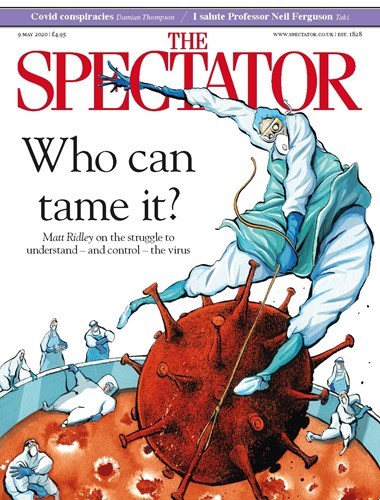
There is one vital fact that emerges from the fog. Countries that did a lot of testing from the start have fared much better than countries that did little testing. This is true not just of many Asian countries, such as South Korea (though Japan is an exception), but within Europe too. Up to the middle of last month, Iceland, Lithuania, Estonia and Germany had done many more tests per million people and recorded many fewer deaths per million people than Belgium, Britain, Italy and Sweden. As Max Roser of the website Our World In Data puts it: ‘The countries with the highest death rates got there by having the lowest testing rates.’
This is true of regions within countries, too. In Groningen in northern Holland the overall death rate is up just 4 per cent on last year, while in North Brabant, in the south of the country, the death rate has doubled. The difference is down to testing: on 19 March Professor Alex Friedrich insisted on Groningen refusing to adopt the new national policy of testing only severe and priority cases. Groningen continued testing as many people as possible. Britain’s failure to ramp up testing in mid-March — and to limit testing to those already in hospital with symptoms — is its biggest mistake, not its failure to lock down the economy sooner.
Yet it is not obvious why testing would make a difference, especially to the death rate. Testing does not cure the disease. Germany’s strange achievement of a consistently low case fatality rate seems baffling — until you think through where most early cases were found: in hospitals. By doing a lot more testing, countries like Germany might have partly kept the virus from spreading within the healthcare system. Germany, Japan and Hong Kong had different and more effective protocols in place from day one to prevent the virus spreading within care homes and hospitals.
The horrible truth is that it now looks like in many of the early cases, the disease was probably caught in hospitals and doctors’ surgeries. That is where the virus kept returning, in the lungs of sick people, and that is where the next person often caught it, including plenty of healthcare workers. Many of these may not have realised they had it, or thought they had a mild cold. They then gave it to yet more elderly patients who were in hospital for other reasons, some of whom were sent back to care homes when the National Health Service made space on the wards for the expected wave of coronavirus patients.
The evidence from both Wuhan and Italy suggests that it was in healthcare settings, among the elderly and frail, that the epidemic was first amplified. But the Chinese authorities were then careful to quarantine those who tested positive in special facilities, keeping them away from the hospitals, and this may have been crucial. In Britain, the data shows that the vast majority of people in hospital with Covid-19 at every stage have been ‘inpatients newly diagnosed’; relatively few were ‘confirmed at the time of admission’. The assumption has been that most of the first group had been admitted on an earlier day with Covid symptoms. But maybe a lot of them had come to hospital with something else and then got the virus.
Even if you combine both groups, there are hardly enough admissions to explain the number of deaths in hospitals, unless nearly everybody admitted to hospital with Covid has died. It is likely that the frail and elderly, which the virus singles out for punishment, were more likely to be going to hospitals or clinics for other ailments and it was there that many of them got infected during February and March.
In Belgium, the country with the worst epidemic per head of population (though the numbers are inflated by the way the country defines a Covid death), all 210,000 people in care homes, both residents and staff, were tested in the second half of April. Some 10 per cent of them tested positive for the virus. That’s actively having it at the time of the test, not having had it: one in ten!
I also appeared on Spectator's The Edition podcast to discuss this article.
If Covid-19 is at least partly a ‘nosocomial’ (hospital-acquired) disease, then the pandemic might burn itself out quicker than expected. The death rate here peaked on 8 April, just two weeks after lockdown began, which is surprisingly early given that it is usually at least four weeks after infection that people die if they die. But it makes sense if this was the fading of the initial, hospital--acquired wave. If you look at the per capita numbers for different countries in Europe, they all show a dampening of the rate of growth earlier than you would expect from the lockdowns.
This idea could be wrong, of course: as I keep saying, we just don’t know enough. But if it is right, it drives a coach and horses through the assumptions of the Imperial College model, on which policy decisions were hung. The famous ‘R’ (R0 at the start), or reproductive rate of the virus, could have been very high in hospitals and care homes, and much lower in the community. It makes no sense to talk of a single number for the whole of society. The simplistic Imperial College model, which spread around the world like a virus, should be buried. It is data, not modelling, that we need now.
A study of 391 cases of Covid-19 and 1,286 of their contacts, in the Shenzhen region of China, found that 80 per cent of cases were transmitted by just 9 per cent of carriers, and that only 11 per cent of those sharing a household with a case caught the virus. By contrast, a study of a nursing home in Washington state found that 23 days after the first case was diagnosed on 20 January, 64 per cent of residents tested positive, half of them showing no symptoms. An analysis by Dr Muge Cevik of St Andrews University of 14 similar studies concluded that prolonged and close contact is necessary for transmitting the virus and the risk is highest in enclosed environments: households, long-term care facilities and public transport. She adds: ‘Casual, short interactions are not the main driver… Epidemic intensity is strongly shaped by crowding.’
If the elderly, obese and frail are not just at greater risk of dying, but also more susceptible and more infectious, then by definition everybody else is less so. Gabriela Gomes and colleagues at the Liverpool School of Tropical Medicine looked at what would happen if the susceptibility of different segments of the population to the virus is very different, and concluded that in some circumstances effective herd immunity could be achieved with as little as 10 per cent of the population immunised. In the words of the study: ‘Individuals that are frailer, and therefore more susceptible or more exposed, have higher probabilities of being infected, depleting the susceptible subpopulation of those who are at higher risk of infection, and thus intensifying the deceleration in occurrence of new cases.’
If this is right, then it is good news. Once the epidemic is under control in hospitals and care homes, the disease might die out anyway, even without lockdown. In sharp contrast to the pattern among the elderly, children do not transmit the virus much if at all. A recent review by paediatricians could not find a single case of a child passing the disease on and said the evidence ‘consistently demonstrates reduced infection and infectivity of children in the transmission chain’. One boy who caught it while skiing failed to give it to 170 contacts, but he also had both flu and a cold, which he donated to two siblings. Children appear to have ACE2 receptors, the cellular lock that the coronavirus picks, in their noses but not their lungs.
This makes models based on flu, a disease that hits the young hard, misleading. The more the coronavirus has to use younger people to get around, the weaker its chances of surviving. Summer sunlight should slow it further, both by killing the virus directly and by boosting vitamin D levels. Vitamin D protects against colds and flu, and especially at the end of winter is often deficient in obese, dark-skinned or elderly people, all of whom have proved more susceptible to Covid-19. In a study in Indonesia, Covid-19 cases with deficient vitamin D were an enormous 19 times more likely to die from the disease than people with adequate levels.
It won’t be straightforward and there will be setbacks, but testing, followed by track and trace, is plainly now the way out. Britain is belatedly catching up. Matt Hancock’s ambitious dare to the healthcare system to get to 100,000 tests a day had the desired effect. We are now brimming with testing capacity, albeit still too centralised and slow in getting results back to people. The Office for National Statistics is starting to gather data that will give a national picture. The antibody test is coming. So are apps to tell us if we have come close to an infected person. Precautions like face masks will now become widespread. It would be a surprise, given that the virus is not very good at spreading among younger people, if it could survive such an assault on more than one front.
Then we have to tackle another set of unknowns relating to a different species of creature: the human being. How people react to an easing of the lockdown is also uncertain. The British government took the paternalist view that we could not be trusted to take advice but must be ordered into lockdown. It rushed through some terrifyingly illiberal legislation. With a few exceptions, the British people appear to have become willing, even censorious, assistants in the enforcement of the rules. The problem is not now people disobeying the rules, but being terrified to give up the extreme safety of lockdown and relaxed about staying at home on taxpayer--subsidised wages. In the light of what we know, it is vital that the government now switches from urging us to stay at home to urging us to return to as much of normal life as possible.
Be in no doubt that the strangulation that is asphyxiating the economy will have to be gradually lifted long before we know the full epidemiology of the virus. Perilous though the path is, we cannot wait for the fog to lift before we start down the mountain.
To stay updated, follow me on Twitter @mattwridley and Facebook, or subscribe to my new newsletter!
My new book How Innovation Works is coming in May, and is available to pre-order in the UK, US, and Canada.
May 5, 2020
It is time to take seriously the link between Vitamin D deficiency and more serious Covid-19 symptoms
A suggestive set of numbers was published online in April by a medical scientist in the Philippines, Dr Mark Alipio. Of 49 patients with mild symptoms of Covid-19 in three hospitals in southern Asian countries, only two had low levels of vitamin D; of 104 patients with critical or severe symptoms, only four did not have low levels of vitamin D. The more severe the symptoms, the more likely a patient was to be not just low but deficient in the vitamin. Could vitamin D deficiency make the difference between getting very ill or not?
There has long been evidence that a sufficiency of vitamin D protects against viruses, especially respiratory ones, including the common cold. Vitamin D increases the production of antiviral proteins and decreases cytokines, the immune molecules that can cause a “storm” of dangerous inflammation. It has long been suspected that most people’s low vitamin D levels in late winter partly explain the seasonal peaking of flu epidemics, and rising vitamin D levels in spring partly explain their sudden ending. Vitamin D is made by ultraviolet light falling on the skin, so many people in northern climates have a deficiency by the end of winter. Eating fish and eggs helps, but it is hard to get enough of it in the diet.
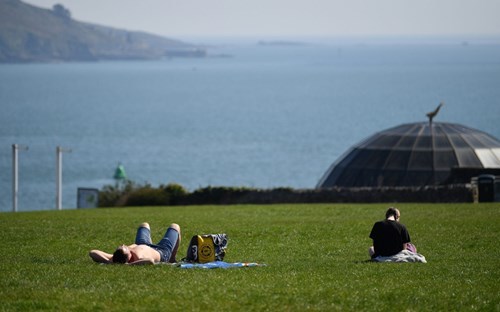
Here is a list of people who are more likely to be vitamin D deficient than the average: dark-skinned people (pigment blocks sunlight); obese people (the vitamin gets sequestered in fat cells); type-2 diabetics (vitamin D improves the body’s sensitivity to insulin); the elderly (they tend to avoid the sun and eat more frugally); city dwellers (they see less sunlight). Does that list ring any bells? All appear to be more likely to hospitalised with severe cases of Covid-19.
In addition, men tend to have slightly lower levels of vitamin D than women in winter, but slightly higher in summer, though the difference is probably not enough to explain why men are much more likely to die of Covid-19.
One recent study in Manchester found that average levels of vitamin D were 30 per cent higher in summer than in winter and three times as high at all times in white people as in South Asians. The latter had a median level of just 5.8 nanograms per millilitre in their blood in winter, way below the 20 that is regarded as sufficient. Surprisingly, despite guidelines from Public Health England, NHS GPs do not routinely check vitamin D levels or advise taking supplements.
Might it not be a good idea to tell everybody to take vitamin D supplements at this time, just in case it helps? In a letter to the British Medical Journal last week urging attention to Dr Alipio’s results, a long list of doctors wrote as follows: “Vitamin D biology is a mature well-researched field, dating back 100 years. Doses, and risks, within clinical parameters, are established and well quantified. Governmental intake guidance exists. Vitamin D deficiency is a medically accepted condition, requiring treatment.”
And for goodness sake, will somebody please tell the police to stop harassing sunbathers in parks?
To stay updated, follow me on Twitter @mattwridley and Facebook, or subscribe to my new newsletter!
My new book How Innovation Works is coming in May, and is available to pre-order in the UK, US, and Canada.
April 30, 2020
Watch: BlazeTV with Glenn Beck
I went on The Glenn Beck Program on BlazeTV for 15 minutes to discuss the pandemic, lockdowns, the NHS, the economy, and more:
Full Episode on BlazeTV
Full Episode on iTunes (Interview begins at 45:30)
To see more of my appearances as soon as they're available, subscribe to my new YouTube channel.
To stay updated, follow me on Twitter @mattwridley and Facebook, or subscribe to my new newsletter!
My new book How Innovation Works is coming in May, and is available to pre-order in the UK, US, and Canada.
April 28, 2020
Podcast: The Political Orphanage with Andrew Heaton
A month or two ago, I went on a podcast called The Political Orphanage with Andrew Heaton to have what Andrew called a "literary tailgating party", and discuss both The Rational Optimist and my upcoming book How Innovation Works.
Listen on Apple Podcasts
I thought it was a really good interview, and enjoyed it so much we went on for more than an hour. It also provides a break from the heavily Coronavirus focused content of the last month.
To stay updated, follow me on Twitter @mattwridley and Facebook, or subscribe to my new newsletter!
My new book How Innovation Works is coming in May, and is available to pre-order in the UK, US, and Canada.
Podcast: The Remnant with Jonah Goldberg
I went on The Remnant with Jonah Goldberg podcast to discuss innovation, the lockdowns, and more.
How does technological innovation actually happen? We were able to speak to Matt Ridley, who has literally written the (upcoming) book on this subject, How Innovation Works. Matt brings up fascinating points, such as whether or not innovation really relies on “great men” miraculously coming up with brilliant ideas, why we are often resistant to new technology, and how we can get out of our current innovation slump, a product of our cultural risk-aversion. And tune in to see where he places on the ranking of Most British People Ever (™).
To stay updated, follow me on Twitter @mattwridley and Facebook, or subscribe to my new newsletter!
My new book How Innovation Works is coming in May, and is available to pre-order in the UK, US, and Canada.
April 24, 2020
The contenders – and challenges – in the race to cure Covid
A striking feature of Covid-19 is how medieval our response has had to be. Quarantine was the way people fought plagues in the distant past. We know by now that it will take many months to get a vaccine, whose job is to prevent you getting the disease. But what about a cure once you have caught it: why is there no pill to take? The truth is that, advanced as medical science is, we are mostly defenceless against viruses. There is no antiviral therapy to compare with antibiotics for treating bacteria.
Arguably, virology in 2020 is where bacteriology was in the 1920s. At the time, most of the experts in that field — including Alexander Fleming and his mentor, the formidable Sir Almroth Wright (nicknamed Sir Always Wrong by his foes) — thought a chemical therapy that killed bacteria without harming the patient was a wild goose chase. Instead, they argued, theway to fight bacteria was to encourage the body’s immune system. ‘Stimulate the phagocytes!’ was the cry of Wright’s semi-fictional avatar Sir Colenso Ridgeon in George Bernard Shaw’s play The Doctor’s Dilemma (referring to white blood cells). Vaccines should be used to treat as well as prevent infections, thought Wright and Fleming. Fleming then turned this theory upside down with his discovery of penicillin in 1928.
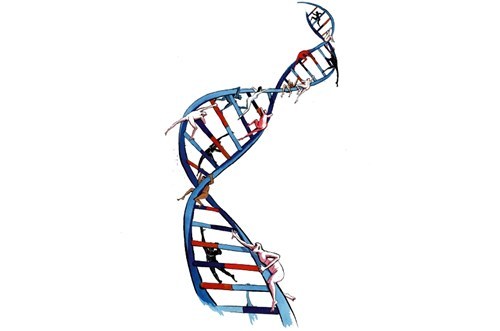
There are two reasons for this failure to have anything on the shelf that can be used to treat viruses: one biological, the other economic. The biological problem, as Amesh Adalja of Johns Hopkins University argued in a prescient call to arms just before the pandemic struck, is that viruses do not have their own biochemistry, because they borrow ours.
So unlike, say, tuberculosis, there is not much to attack. As any doctor will tell you, antibiotics are no use in fighting a virus. They interfere with machinery found only in bacteria, but there is no equivalent machinery in viruses — which are just a bunch of genes (15 of them in the case of Sars-CoV-2) that borrow our body’s machinery to replicate themselves.
The problem is that viruses differ from each other, so treatments that work for one seldom work for another. The drugs that work against HIV-1, the main cause of Aids, sometimes do not even work against HIV-2,a milder version of the virus. Those that work against herpes don’t kill the very similar cytomegalovirus. One influenza drug works only against influenza A and not B. One antiviral kills just one genotype of hepatitis C. It is no coincidence that the antiviral treatments capable of attacking more kinds of virus, such as ribavirin, are also the most toxic to the patient, because they tend to attack the machinery of the host as well.
This is where the economic argument comes in. Highly specific drugs do not repay the vast sums necessary to get them through clinical trials to prove their efficacy. Many viruses lay out patients for only a short time — perhaps a matter of days. So patients do not come back for repeat prescriptions, further denting the incentive to develop the drug. Aids and herpes are long-lasting exceptions — sexually transmitted diseases need to lie low inside your genes to give you time to move on to a new partner — which is why they have attracted attention from pharmaceutical firms. By the time some drugs were ready to be tried against ebola in the 2014-15 epidemic in West Africa, it was over.
Protease inhibitors
None the less, the battles against HIV, ebola and Sars have left us with many more candidates for curing Covid-19 than we would otherwise have. The long search for Aids cures was eventually won with the help of drugs called protease inhibitors, which work by preventing the ‘cleavage’ (precise breaking) of a protein molecule, essential to the manoeuvre by which the virus gets into a cell.
Protease inhibitors tend to be highly specific, so the HIV ones are not necessarily useful against Sars-CoV-2. A different protease inhibitor, however, called camostat mesylate, already approved for use in Japan as a treatment for pancreatitis, is showing promise. It was found in 2012 to work against Sars in the laboratory. If successful, camostat mesylate will be useless against most other viruses, making it unprofitable in normal times, but in a pandemic of this size, Japan’s Ono Pharmaceutical won’t be out of pocket.
Remdesivir
Invented by Gilead Sciences, the California firm that developed several HIV therapies, this compound fools the cell into using a fake version of a particular molecule when copying the virus’s genes, which are made of an alternative version of DNA called RNA. In theory such a trick should work against any virus that uses RNA for its genes and should not hurt patients because their genes are made of DNA. In 2015 remdesivir worked against ebola in monkeys, but in the 2018 epidemic in Congo it failed to make sufficient difference to ebola patients compared with other treatments.
In the lab, remdesivir kills a variety of coronaviruses and a recent report found that it cured cats of a coronavirus infection. During the current epidemic, it has been rushed into treatment on a compassionate-use basis in America for people who are dying. Preliminary results are promising and have caused a flurry of recent optimism, and the results of larger, controlled trials are eagerly awaited. However, remdesivir is unlikely to be the silver bullet because it is probably best if taken early in the infection, but you would not want to take it if you had a mild bout. It’s administered intravenously and has some nasty side effects.
Favipiravir
There is more hope for favipiravir, sold as Avigan, one of the few antiviral treatments showing promise against more than one kind of virus. Bizarrely, it’s made by a subsidiary of Fujifilm, which diversified into chemicals and pharmaceuticals to avoid the fate of Kodak. Invented during the search for a herpes cure, it has since shown promise against influenza. Though good in the laboratory, it was only partially effective against ebola in Guinea in 2014, but initial trials on 80 coronavirus patients in China this year have suggested that it can speed up the recovery time for Covid patients, perhaps cutting it in half. So Fujifilm is now rushing to increase production and the drug has been cleared for use against coronavirus in Japan. The good news is it’s a pill, not an injection, and has few side effects except in pregnant women, where it is not safe.
The urgency surrounding a viral pandemic is fertile soil for exaggeration. Tamiflu, for influenza, is one of the world’s best-selling drugs, and governments spent billions acquiring stockpiles of it during the 2009 swine flu panic, to the benefit of Roche in particular. A lengthy campaign by the British Medical Journal has challenged the effectiveness of Tamiflu, pointing out that it has not been shown to work in randomised controlled trials. The drug’s defenders say this is unfair, as the medication’s partial effectiveness is so well established that it is now unethical deliberately to give half the patients in the trial no drug. In any case Tamiflu will not work against coronavirus: it targets an enzyme only used by influenza.
Monoclonal antibodies
If chemical treatments do not work, so-called monoclonal antibodies might. If someone recovers, their own body produces antibodies that smother the virus. These days it’s possible to mass-produce exact copies of the antibodies that work, using genetic engineering. Known as monoclonal antibodies, they proved to be the best way to treat ebola patients in Congo in 2018, when the US biotech firm Regeneron came up with a cocktail of human antibodies using genetically engineered mice. Regeneron has rushed a new cocktail of Covid-19 antibodies through the same procedure and hopes to have it ready to test in early summer. Scaling it up for mass production will not, however, be as easy as it would for a chemical pill.
Hydroxychloroquine
French studies suggest that hydroxychloroquine, the malaria medication championed by Donald Trump, may well be at least a partial cure, especially if used in conjunction with the antibiotic azithromycin. But clinical trials are still awaited. It is not yet clear how it works: after all, malaria is neither a virus nor a bacterium, but a parasite. But hydroxychloroquine is used against rheumatoid arthritis and the autoimmune disease lupus. In the laboratory, it does seem to slow and inhibit the infection of cells by this coronavirus.
Hydroxychloroquine also tends to team up with the metal zinc and there are persistent and reliable reports that zinc either stops viruses replicating or helps the immune response to them. A gold-standard review of clinical trials found that zinc lozenges do shorten the duration of a cold by somehow interfering with virus replication. This does not just seem to be a diminishing-returns effect whereby having too little zinc, like having too little vitamin D, is bad, but once you have enough, having even more is no better. But if it is, up to a quarter of people in developing countries are deficient in zinc, and zinc deficiency is not uncommon among the elderly in western countries, so this may be part of the explanation why some elderly people are more seriously affected. In short, zinc supplements as a cheap medication, unrewarding to big pharma and therefore neglected, cannot be ruled out as a useful thing to try. Intriguingly, too much zinc kills your sense of taste, as does Covid-19 in many cases.
Altogether, I am now optimistic that within a month or two, one of the 30 or more therapies currently being tested is likely to prove effective and safe. Primed by Aids and ebola, we know where to look for chemicals that inhibit viruses, or prevent viruses replicating, in a way that we did not 20 years ago. If people can take a pill that drastically reduces their chances of dying, and clears up their symptoms before they need to be admitted to hospital, then we may not have to wait for a vaccine to end the lockdown and achieve herd immunity.
To stay updated, follow me on Twitter @mattwridley and Facebook, or subscribe to my new newsletter!
My new book How Innovation Works is coming in May, and is available to pre-order in the UK, US, and Canada.
April 9, 2020
The Bats Behind the Pandemic
My article for The Wall Street Journal:
RaTG13 is the name, rank and serial number of an individual horseshoe bat of the species Rhinolophus affinis, or rather of a sample of its feces collected in 2013 in a cave in Yunnan, China. The sample was collected by hazmat-clad scientists from the Institute of Virology in Wuhan that year. Stored away and forgotten until January this year, the sample from the horseshoe bat contains the virus that causes Covid-19.
The scientists were mostly sampling a very similar species with slightly shorter wings, called Rhinolophus sinicus, in a successful search for the origin of the virus responsible for the SARS epidemic of 2002-03. That search had alarming implications, which were largely ignored.
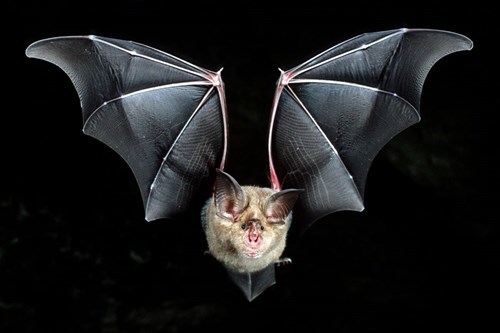
In Shitou Cave, south of Kunming, the capital of Yunnan, they found viruses in the bats’ droppings and anal swabs that were more similar to human SARS than anything found in palm civets, the small mammals that until then were presumed to be the source of human infection. Back in the laboratory, they found that one of the viruses from bat droppings, called WIV1, could thrive in monkey and human cells specially engineered to activate the gene for ACE2 receptors, the lock to which a coronavirus’s spike protein can fit as a key. This suggested that people could catch SARS directly from a bat dropping.
Then in 2016, Ralph Baric and colleagues at the University of North Carolina at Chapel Hill showed that the same bat virus could infect live mice that had been engineered to express the human gene for the ACE2 receptor. The virus was “poised for human emergence,” as the title of Dr. Baric’s paper put it.
When Covid-19 broke out, attention focused on pangolins, mammals often called scaly anteaters. Early analyses of the pangolin version of the virus seemed to indicate it was even more closely related to the human version than the RaTG13 bat sample was. The illegal pangolin trade for traditional Chinese medicine brings people into contact with sick animals. Just over a year ago, 21 live Malayan pangolins destined for sale in China were intercepted by anti-smuggling officers in Guangdong. Despite the best efforts of a local wildlife rescue center, 16 died with swollen, flooded lungs, rich in coronaviruses.
The role of pangolins in the spread of Sars-CoV-2, the virus that causes Covid-19, remains unclear. A closer look at more of the Sars-CoV-2 genome, published last week by Maciej Boni at Penn State University and David Robertson at Glasgow University, together with Chinese and European colleagues, finds that human versions of the virus are more closely related to the RaTG13 horseshoe bat sample from the cave than they are to the known pangolin versions. It is not yet possible to tell whether the virus went from bat to pangolin to people, or from bat to pangolin and bat to people in parallel.

Significantly, the same analysis shows that the most recent common ancestor of the human virus and the RaTG13 virus lived at least 40 years ago. So it is unlikely that the cave in Yunnan (a thousand miles from Wuhan) is where the first infection happened or that the culprit bat was taken from that cave to Wuhan to be eaten or experimented on.
Rather, it is probable that somewhere much closer to Wuhan, there is another colony of bats carrying the same kind of virus. Unless other evidence emerges, it thus looks like a horrible coincidence that China’s Institute of Virology, a high-security laboratory where human cells were being experimentally infected with bat viruses, happens to be in Wuhan, the origin of today’s pandemic.
Bats are sold in markets and supplied directly to restaurants throughout China and southeast Asia, but no direct evidence of their sale in Wuhan’s wet market has come to light. Also, horseshoe bats, which are much smaller than the tastier fruit bats, are generally not among the species eaten. The significance of the Yunnan cave sample is that it shows the bat virus didn’t need to recombine with viruses in other species in a market to be infectious to people. The role of the wet markets may be that other animals get infected there and produce much higher loads of virus than the bats would, amplifying the infection.
All over Asia and Africa human beings encounter horseshoe bats, any one of which could be carrying a virus that could start an epidemic if amplified in a market or similar setting. Bats have supplied most of the dangerous new diseases of the past two decades. The natural reservoir of rabies is in bats, especially in the Americas. Ebola, Marburg and other highly dangerous viruses come from bats, mainly in Africa. The Hendra and Nipah viruses are caught from fruit bats and have caused lethal but small outbreaks in south Asia and Australia. And most coronaviruses seem to originate in bats, including SARS and MERS, a frequently fatal illness that people in the Middle East began catching from camels in 2012, the camels having picked it up from bats.
There are good reasons why bats spread so many viruses. Bats are long-lived mammals, like us, and live in large crowds, like us—ideal for spreading respiratory infections in particular. One bat roost in Texas houses 20 million bats at certain times of year, a concentration of mammals paralleled only by people in cities. There are lots of different species—one-quarter of all mammal species are bats—so they have lots of different viruses. And they fly, carrying diseases long distances, allowing viruses to indulge in “host-shifting” between bat species. This especially suits viruses that can “recombine” with related strains, like coronaviruses.
It is not yet clear why horseshoe bats, in particular, are so infested with coronaviruses. These are average-size bats, distinguished by large, pointed ears and weird little sonar dishes known as nose-leafs, the outer part of which are often shaped like horseshoes. There are at least 100 species, many of which look very alike. Absent from the Americas, they are found all over the tropics of the Old World and in some warm temperate regions. They seem to be fond of living in caves and gathering in large aggregations.
In a paper published in February last year, Patrick Woo and colleagues at Hong Kong University surveyed the coronaviruses found in bats and came to a prescient conclusion: “Bat–animal and bat–human interactions, such as the presence of live bats in wildlife wet markets and restaurants in Southern China, are important for interspecies transmission of [coronaviruses] and may lead to devastating global outbreaks.”
We had fair warning with Ebola, Hendra, Nipah, MERS and SARS, and the Yunnan cave discovery in 2013 should have sounded a loud alarm. Even when this pandemic is over, others are possible. Bats live for up to 30 years and don’t seem to suffer much in the way of symptoms from coronaviruses, so bat number RaTG13 may well still be alive.
To stay updated, follow me on Twitter @mattwridley and Facebook, or subscribe to my new newsletter!
My new book How Innovation Works is coming in May, and is available to pre-order in the UK, US, and Canada.
April 7, 2020
WHO must answer serious questions before it is trusted with leading a Covid-19 inquiry
When the pandemic passes, which it will, there will be a reckoning to determine who could have stopped it early and did not. Dominic Raab, the foreign secretary, has suggested that it would have to be carried out by the World Health Organisation: "Obviously, after the crisis has abated I think the time will be right to conduct a kind of 'lessons learned' [inquiry] and I'm sure the World Health Organisation will be at the forefront of that.”
This is a terrible idea. WHO is full of good people with good intentions, but as a body it has very serious questions to answer about its own conduct before we trust it with looking at that of others.
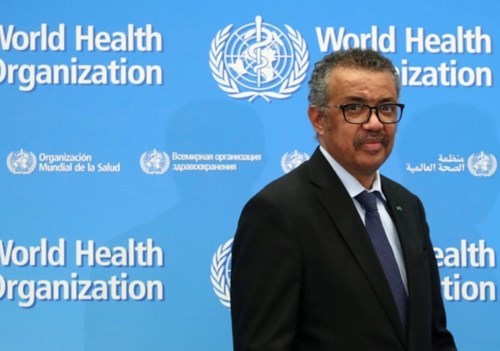
There are three charges against WHO. First, it failed to prepare the world for a pandemic, spending the years since the Sars and ebola alarms talking more about climate change, obesity and tobacco, while others, including the Wellcome Trust and the Gates foundation, actually set up a coalition for epidemic preparedness innovation, and countries like Singapore and South Korea put in place measures to cope with an outbreak like SARS in the future.
Second, once the epidemic began in China, WHO downplayed its significance, tweeting as late as January 14 that “preliminary investigations conducted by the Chinese authorities have found no clear evidence of human-to-human transmission of the novel #coronavirus”, when it had already been warned by the Taiwanese health authorities among others of strong evidence for medical staff in Wuhan becoming ill.
The Chinese government at this stage had known for weeks that the virus was spreading, probably person to person, yet WHO then sycophantically praised the Chinese government. “China is actually setting a new standard for outbreak response,” said WHO’s director-general, Tedros Adhanom Ghebreyesus, a former foreign minister of Ethiopia, a country run by a repressive regime heavily dependent on China. “China is really good at keeping people alive,” echoed the assistant director-general, Bruce Aylward, on 3 March.
On 29 March, a Hong Kong-based journalist asked Aylward to comment on Taiwan’s highly-successful efforts to defeat the virus. At first Aylward ignored the question, claiming not to have heard it. When the journalist offered to repeat it, strangely he said no, he would rather move on to another question. When she pressed, the call was mysteriously cut off. When the journalist called back and asked the question again, he answered a different question, talking about China, rather than Taiwan. The background here is that China is a big funder of WHO and insists that Taiwan be excluded from the organisation since it does not recognise Taiwan’s existence as a separate country. Taiwan banned travel from China very early in the pandemic.
The third charge against WHO is that it has failed before. When the ebola outbreak in West Africa that was to kill 11,000 people began in late 2013, on its own admission WHO hindered the fight against the virus, obsessed with not letting others find out what was happening. In April 2014, the charity Medecins Sans Frontieres announced that the outbreak was out of control. They were promptly slapped down by a WHO spokesman. Others tried again in June to alert WHO. It was not until August that WHO admitted the gravity of the situation.
Later WHO admitted its “initial response was slow and insufficient, we were not aggressive in alerting the world, our surge capacity was limited, we did not work effectively in coordination with other partners, there were shortcomings in risk communication.” All of which is true again today.
In September 2014 at the height of the ebola epidemic, Margaret Chan, the then director-general wrote an article in which she called climate change the “defining issue of the 21st century [which] cannot be contained by doctors in hazmat suits, patients in isolation wards, or hopes that a vaccine or cure is somewhere on the horizon,” implicitly downplaying ebola yet again. In October she gave her apologies to an ebola conference to attend one in Moscow on tobacco.
WHO gives the impression it would rather reprimand rich countries for climate change or bad eating habits than worry about epidemics. It’s also a bit obsessed with celebrities. In 2018, Tedros and the singer Lady Gaga jointly wrote an article in the Guardian about suicide. On 28 March this year, Tedros found time to tweet about having had “a very good call with @ladygaga.” He added: “And happy birthday @ladygaga! I am so touched that you’re spending this moment on finding ways to support the world during #COVID19. I send you my best wishes! Thank you for spreading kindness at such an important moment for all of us! Together!”
It is an open secret among international diplomats and public health experts that WHO is “not fit for mission” (as one of them put it to me), riddled with politics and bureaucracy. Given its previous failures and the warning that was Sars, its leadership has no excuse for reacting so oddly, and so tardily, to the current crisis.
To stay updated, follow me on Twitter (@mattwridley) and Facebook, or subscribe to my new newsletter.
My new book How Innovation Works is coming in May and June, and is available to pre-order in the UK, US, and Canada.
April 3, 2020
Britain’s coronavirus testing is bogged down in bureaucracy
Despite what Corbynites like to claim, Britain’s National Health Service has always relied heavily on the private sector for lots of things. The food it serves to patients is not grown on state-owned farms, nor are the pills it prescribes manufactured in state-owned factories. Yet when it comes to diagnostic tests there seems to be a reluctance to buy them in, even from other public bodies let alone from private firms. This ideological prejudice is proving costly.
A new report by Matthew Lesh for the Adam Smith Institute, published today may explain the British failure compared with other countries when it comes to tackling the current pandemic by testing. On 14 March, Britain was the fifth best country for quantity of Covid-19 viral tests performed per capita. By 30 March it had fallen to 26th in the league.
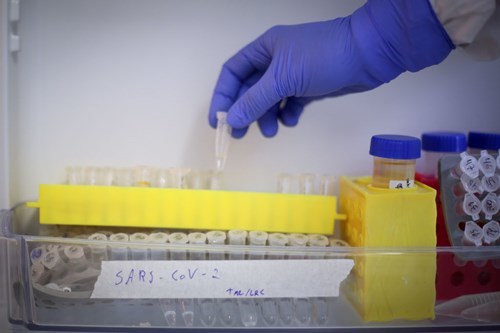
The contrast with the United States is especially striking. America was found badly wanting at the start of the epidemic when the federal Centers for Disease Control insisted on controlling the process of testing people for the virus. It 'sought to monopolise testing, discouraged the private sector developing its own tests and misled state and local authorities about efficacy of its tests', writes Lesh. After heavy criticism, it reversed course, decentralised the system and rapidly expanded testing.
Germany and South Korea began farming out the work of testing samples to contractors from the very start. Britain did not. It initially sent all samples to one laboratory, at Colindale, in north west London. Public Health England also 'chose to develop and encourage the use of its own diagnostic tools, rather than seeking the development of a range of private sector tools and providing fast-track approval', Lesh finds. On 12 February, it began to use 12 other laboratories, but still only with its own tests.
When the number of people showing symptoms shot up in the second week of March, rather than outsource the testing, the NHS simply gave up testing all but patients in hospital. As if to reinforce the centralisation strategy, the government then announced the construction of a huge new testing facility in Milton Keynes, which may work well eventually but to date has been accumulating testing devices donated by universities some of which are sitting idle. The centralisation urge runs deep in this organisation.
By all accounts government ministers were calling for more involvement of the private sector from the start but their orders were being frustrated somewhere inside the bureaucracy of the NHS and Public Health England. The excuse was that the reliability of the tests had to be maintained at a high level, or else false positives and false negatives would cause confusion and danger. So even when other laboratories were eventually allowed to do tests, any 'presumptive positives' had to be sent to Colindale for confirmation right up till 28 March. The United States had suspended a similar policy on 14 March.
Lesh reports that 'On 27 January, South Korean regulators summoned the top 20 medical companies to a special meeting to give them one key task: develop an effective test to detect the novel coronavirus. At the time, South Korea had just four known cases.' In Germany, as Dr Christian Drosten of Berlin’s Charité University Hospital explains, 'Germany does not have a public health laboratory that would restrict other labs from doing the tests. So we had an open market from the beginning.'
Here, private-sector providers were banging on the door of the NHS throughout, offering to do testing. These were not cranks and charlatans, but reputable firms like Northern-Ireland based Randox, one of the biggest manufacturers of diagnostic tests in the world (and the list of companies trying to help includes, I hereby disclose, QuantumDX, a Newcastle based startup in which I became an early stage investor several years ago). I have spoken to neither of these two firms lest they think I am the source for this article and become subject to retribution, but I have heard rumours from others that conversations became heated.
This reluctance of the NHS to buy new tests is not new. One diagnostic industry insider complained to me some years ago that 'I can sell in 140 countries, but the country I find hardest to crack is my own'.
Probably not all the blame lies at the door of the public sector. The shortage of reagents to use in the testing kits is now clearly a problem, and some of this may be down to the way the reagents have been bought up by the big private firms that make the testing cassettes used in the key PCR machines that diagnose the presence of viral RNA. So there may yet prove to be a blockage caused by Big Pharma, which for whatever reason has left Britain exposed. Unlike America, we lack home-grown manufacturers of the key materials – a hole in our life-science industrial strategy, it seems.
Yet centralisation is plainly a big part of the problem. Lesh finds that 'The UK’s Covid-19 testing has been dangerously slow, excessively bureaucratic and hostile to outsiders and innovation. There appears to be an innate distrust of outsiders. PHE has actively discouraged use of private sector testing. Even within the system, the process for testing and validation is very centralised.'
To stay updated, follow me on Twitter (@mattwridley) and Facebook, or subscribe to my new newsletter.
My new book How Innovation Works is coming in May and June, and is available to pre-order in the UK, US, and Canada.
Matt Ridley's Blog
- Matt Ridley's profile
- 2180 followers



